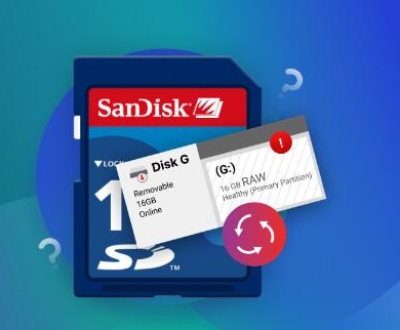Accidentally deleting files is a common and frustrating experience for anyone who uses a computer or digital device regularly. Whether it’s a crucial document, a cherished photo, or a project you’ve spent hours working on, the impact of losing a file can feel significant. However, there’s good news: in most cases, deleted files are not truly lost and can be recovered.
Before diving into the recovery methods, it’s important to understand what happens when you delete a file. On most operating systems, deleting a file doesn’t actually remove it from the disk immediately. Instead, the system marks the file’s space as available for new data to be written over it. The file itself remains on the disk until new data overwrites it.
For instance, when you delete a file on a Windows computer, it typically goes to the Recycle Bin. If you don’t empty the bin, the file can easily be restored. However, once the bin is emptied or the file is permanently deleted using a special command (like “Shift + Delete”), the file still exists on the storage device but becomes less accessible. The operating system simply removes its references from the file system.

On macOS, deleted files first move to the Trash folder, where they stay until you manually empty it. As with Windows, deleted files on a Mac are not immediately erased from the hard drive. Instead, they are moved to a trash folder that can be restored from until the space is overwritten.
Step 1: Check the Recycle Bin (Windows) or Trash (Mac)
The first and easiest step in recovering a deleted file is to check the Recycle Bin (Windows) or Trash (Mac). These built-in features temporarily store deleted files before they are permanently erased from your system.
On Windows:
Open the Recycle Bin by double-clicking the icon on your desktop.
Browse through the files to see if the file you accidentally deleted is there.
If you find the file, right-click it and select Restore. The file will return to its original location.
On Mac:
Open the Trash by clicking the Trash icon in the dock.
Look through the files and locate the deleted file.
Right-click on the file and select Put Back. The file will be restored to its original location.
If you don’t find your deleted file in the Recycle Bin or Trash, you may have emptied the bin, or the file could have been permanently deleted. Don’t panic yet—there are still other methods available.
Step 2: Use File History or Time Machine (Backup Solutions)
If you have a backup system in place, such as Windows File History or macOS Time Machine, you can recover your file from a previous version. Both of these tools allow you to restore files to a previous state, which can be invaluable when you need to recover accidentally deleted files.
On Windows (File History):
Type Control Panel into the search bar and open it.
Select System and Security and then File History.
If you have File History enabled, click Restore personal files.
Browse through the available backups to find the file you need to restore.
Select the file and click the green Restore button.
On Mac (Time Machine):
Open the folder where the deleted file was located (or any folder where the file may be).
Launch Time Machine by clicking the Time Machine icon in the menu bar and selecting Enter Time Machine.
Use the timeline on the right to go back in time and find the deleted file.
Select the file and click Restore to bring it back to its original location.
Step 3: Use Data Recovery Software
Panda Assistant
Panda Assistant is a powerful data recovery software designed to help users recover lost or deleted files from a variety of storage devices, including hard drives, USB flash drives, memory cards, and even formatted or damaged storage media. Whether you’ve accidentally deleted important files, suffered from system crashes, or experienced accidental formatting, Panda Assistant provides a simple and effective solution to restore your precious data.
The software is known for its user-friendly interface and ease of use, making it accessible even for non-technical users. It offers a range of recovery options to meet different needs, including the ability to recover documents, photos, videos, audio files, and other file types. It also supports various file systems such as NTFS, FAT32. and exFAT, making it compatible with a wide range of storage devices and operating systems, including Windows and macOS.
One of the standout features of Panda Assistant is its advanced scanning algorithms, which can deep-scan devices to locate and recover files that are not immediately visible or accessible through conventional methods. This makes it an ideal tool for more complex data loss situations, such as recovering files from damaged or corrupted drives.
Step 4: Advanced File Recovery Techniques
If you are dealing with an SSD (Solid-State Drive), the chances of recovering deleted files are lower than with traditional HDDs (Hard Disk Drives). This is because SSDs use a process called TRIM, which actively erases deleted files to optimize the drive’s performance and lifespan. If your SSD supports TRIM, once a file is deleted, it is usually unrecoverable. However, there are still ways to attempt recovery:
Using Specialized SSD Recovery Tools:
R-Studio: This tool is known for its ability to recover data from damaged or formatted drives, including SSDs.
GetDataBack: A powerful data recovery program that can work with both HDD and SSD.
Professional Data Recovery Services: If you’ve lost vital data from an SSD and recovery software has failed, it might be time to consider professional data recovery services. These companies use specialized tools to recover data from storage devices that are severely damaged.
Step 5: Recover Files from Cloud Services
If you store your files in a cloud service such as Google Drive, Dropbox, or OneDrive, recovering a deleted file is relatively straightforward.
Google Drive:
Open Google Drive and go to the Trash folder in the left-hand sidebar.
Find the deleted file and right-click on it.
Select Restore to return the file to its original location.
Dropbox:
Log into your Dropbox account and go to the Deleted Files section.
Browse the deleted files and find the one you need.
Click the Restore button next to the file.
OneDrive:
Go to OneDrive and click on Recycle Bin in the left sidebar.
Locate the deleted file and click the Restore button.
Step 6: Prevent Future Data Loss
Once you’ve successfully recovered your deleted file, it’s crucial to take steps to prevent similar incidents in the future. Here are some best practices for data protection:
Enable File History (Windows) or Time Machine (Mac): Always have a backup solution running to restore lost files quickly.
Use Cloud Storage: Regularly save important files to cloud storage, which can offer version control and easy restoration.
Employ Data Recovery Software: Keep reliable data recovery software installed, so you’re prepared in case of accidental deletion.
Regular Backups: Make it a habit to back up your data frequently to an external hard drive or cloud service.
About us and this blog
Panda Assistant is built on the latest data recovery algorithms, ensuring that no file is too damaged, too lost, or too corrupted to be recovered.
Request a free quote
We believe that data recovery shouldn’t be a daunting task. That’s why we’ve designed Panda Assistant to be as easy to use as it is powerful. With a few clicks, you can initiate a scan, preview recoverable files, and restore your data all within a matter of minutes.
Subscribe to our newsletter!
More from our blog
See all postsRecent Posts
- Retrieve deleted videos from sd card 2025-04-25
- How to retrieve damaged sd card? 2025-04-25
- Retrieve photos from sd card 2025-04-25

 Try lt Free
Try lt Free Recovery success rate of up to
Recovery success rate of up to









